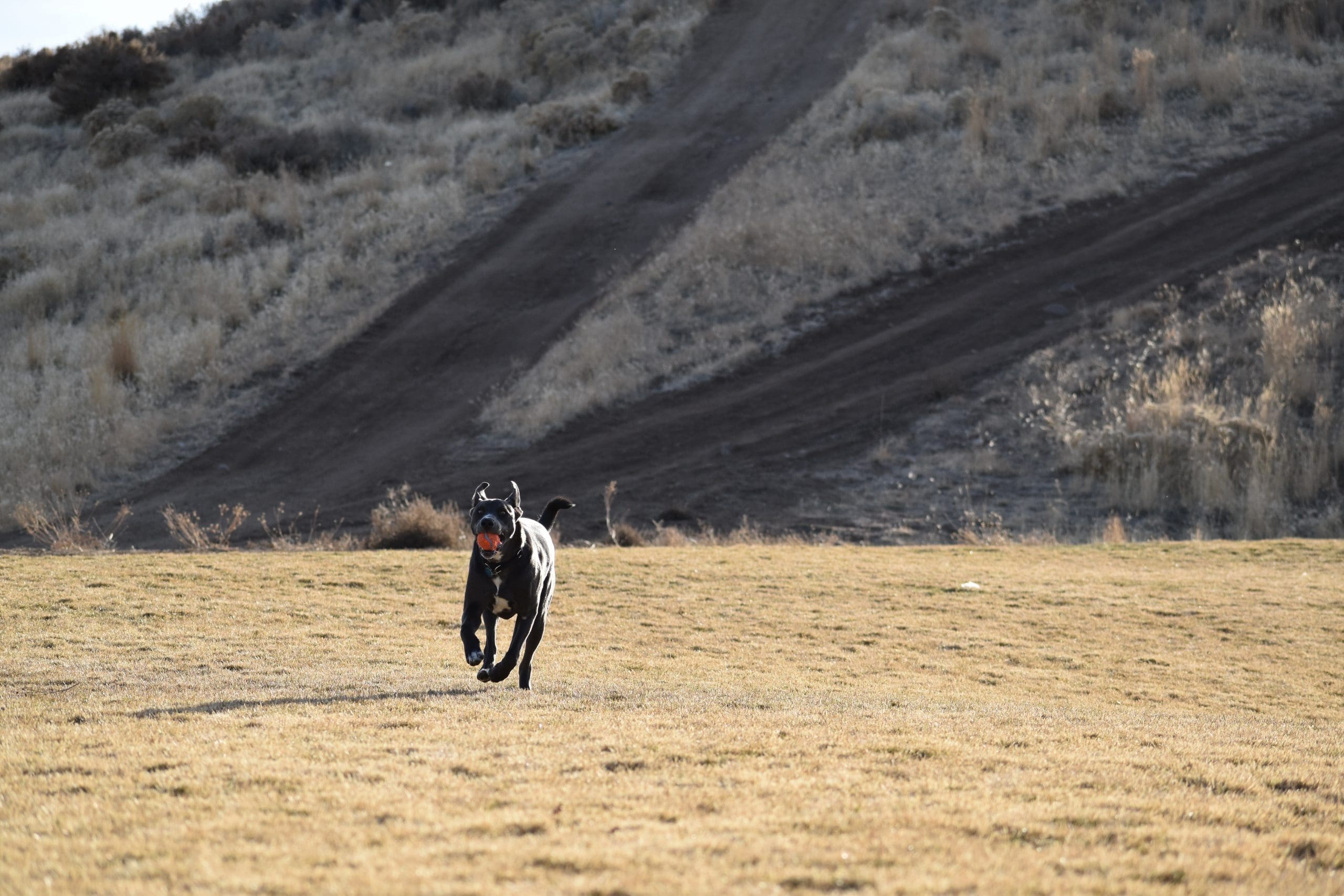How To Cut Black Dog Nails?
Post Date:
December 10, 2024
(Date Last Modified: November 13, 2025)
Cutting a black-coated dog’s nails requires careful technique because the quick is often hidden, so trimmers and handling must be chosen and used with extra caution. The following sections explain how to prepare, identify the quick, trim safely, manage bleeding, and when to get professional help.
Understanding black dog nails
Black or heavily pigmented nails typically hide the quick, the vascular and nerve-filled inner tissue, so visual confirmation is unreliable and accidental cutting is more likely. When the quick cannot be seen, trim very conservatively and take small increments to reduce the chance of hitting the quick; a common conservative recommendation is to remove 1–2 mm per cut when the quick is not visible [1].
Pigment varies by breed and individual: some dogs have nails with translucent tips where the quick is easier to estimate, while others show uniform dark color across the entire nail, which raises the trimming risk. Age and activity also affect quick length: nails that are not worn by walking or activity may have quicks that extend farther into the nail shaft, increasing the likelihood of bleeding if nails are shortened too aggressively.
Tools and supplies needed
Choose tools that match your dog’s size, nail thickness, and temperament. Scissors-style or guillotine clippers provide straight, one-cut trimming for thicker nails, while plier-style clippers give leverage for tough nails; a coarse-grade rotary grinder is helpful for shaping and smoothing after clipping. Keep tools sharp and sized appropriately—dull or undersized clippers increase the risk of crushing or splitting the nail, which can lead to pain and bleeding.
- Clippers: scissor/guillotine or plier style, sized for the dog’s nail diameter.
- Rotary grinder: for smoothing and gradual reduction when quick visibility is poor.
- Styptic agent and first-aid kit: styptic powder or pencil, clean gauze, antiseptic wipe, and bandage material.
- Lighting and restraint aids: a bright lamp or flashlight and a non-slip surface to keep the paw steady.
Table: a concise comparison of common trimming tools appears below for quick reference.
| Tool | Best for | Key note |
|---|---|---|
| Scissor-style clippers | Thick nails, larger breeds | Clean-cut action; requires steady hand |
| Guillotine clippers | Small-to-medium nails | Easier single-handed use; change blades as needed |
| Rotary grinder | Smoothing tips, cautious shortening | Good for gradual reduction; watch heat buildup |
| Styptic powder/pencil | Bleeding control | Essential in any kit for accidental cuts |
How to identify the quick in black nails
When the quick cannot be seen, use indirect methods to estimate its location. Look for subtle translucency at the nail tip; even dark nails often show a slightly lighter or translucent zone near the end where it is safer to cut. A thin white crescent at the tip can indicate free edge of the nail separate from the quick.
Shine a bright flashlight through the nail from beneath or the side—the inner quick sometimes appears darker against transmitted light, helping you mark a cutting limit. Another cautious technique is to make very small test trims at the tip and watch the cut surface: if you see a small dark dot or a moist, slightly pink center appear, stop trimming because you are approaching the quick.
Observe tactile and behavioral cues: when the trimmer gets close to the quick, some dogs react at the instant of contact or after a slightly deeper cut; pausing after each small clip and observing for flinch or withdrawal helps detect proximity without relying on visible quick alone.
Preparing your dog and environment
Create a calm, well-lit workspace on a non-slip surface so the dog can stand or lie comfortably without slipping. Low noise, steady lighting aimed at the paws, and a familiar towel or mat all reduce stress. Position the dog so you can access one paw at a time and stabilize the limb close to the body to minimize sudden movement.
Desensitization and handling practice help most dogs tolerate nail care: short handling sessions that include touching the paws, pressing the toes to expose nails, and rewarding calm behavior gradually build tolerance. Keep sessions brief to avoid stress and increase duration as the dog accepts handling; brief, frequent practice is more effective than long, infrequent sessions for most dogs.
Use gentle restraint: sitting with the dog between your legs, or having a second person hold the body while you trim, gives control without tight immobilization. For highly anxious or reactive dogs, break trimming into single-nail sessions with rewards, and consider professional help if safe handling cannot be maintained.
Correct cutting technique step-by-step
Start by holding the paw gently and isolating one nail. Cut from the top straight across or at a slight angle to maintain a natural nail shape and avoid splintering. Make small, incremental cuts from the tip, removing only a tiny amount of nail with each cut to reduce the risk of nicking the quick.
When you cannot see the quick, stop after removing 1–2 mm per cut and inspect the cross-section for coloration changes that signal closeness to the quick; if you observe a moist or dark center, cease trimming that nail [1]. Between quick cuts, give the dog a brief break to relax and check the paw for reactions or signs of sensitivity.
Stabilize the paw by supporting the pad and holding the toe steady; trim the dewclaw separately if present. Keep clipper blades perpendicular to the nail to avoid crushing. Work methodically around the paw, finishing with smoothing any sharp edges using a file or grinder if the dog tolerates it.
Using a grinder safely
A grinder is useful when the quick is uncertain because it removes nail material gradually and allows for better shaping; however, grinders produce heat and vibration that can startle some dogs. Use the grinder at a moderate speed and apply only light, steady pressure—avoid forced grinding that generates heat on the nail surface.
For most small-to-medium dogs, use lower speed settings and short contact intervals to prevent the nail from heating; higher speeds can be appropriate for very thick nails but increase the chance of heat and noise-related anxiety. Pass the grinder across the edge in short, repeated touches and pause frequently to check the nail temperature by touch and to allow the dog to remain calm.
After grinding, finish by checking for any sharp remnants and ensuring the nail is smooth to prevent catching on fabric or carpets. If the grinder jams, stop immediately and inspect the burr before resuming; a jam can splinter the nail.
Avoiding common mistakes
Common errors include cutting too far toward the paw, trimming at the wrong angle, twisting or pulling the nail during cutting, using dull tools, and rushing. Cutting at an angle that leaves a jagged edge increases the risk of ingrown nails and snagging. Dull blades crush the nail instead of slicing it cleanly and can cause splintering and pain.
Do not pull or twist the nail when cutting; stabilize the toe and make clean, decisive snips. Avoid trimming nails immediately after intense exercise if the dog is panting or distracted; a calm dog is less likely to move suddenly. If the dog resists strongly, stop and reassess rather than forcing a procedure that could injure you or the dog.
Managing bleeding and basic first aid
If you nick the quick, applying direct pressure with clean gauze or a cloth will often stop bleeding; hold firm pressure for several minutes and reassess before releasing. Styptic powder or a styptic pencil can be applied directly to the bleeding point to constrict vessels and hasten clotting. For immediate home care, apply firm pressure for up to 5 minutes; if bleeding continues beyond 15 minutes, seek veterinary evaluation [4].
After bleeding stops, clean the area with a mild antiseptic wipe and keep the paw clean and dry for 24–48 hours while monitoring for signs of infection such as swelling, persistent oozing, or increased pain. If swelling, persistent discharge, or lameness develops, have the nail and toe assessed by a veterinarian to rule out deeper injury or infection.
When to seek professional help
Some situations require a groomer or veterinarian rather than home trimming: severe or persistent bleeding, signs of infection, nails broken back to the quick, ingrown nails, or any case where the dog is aggressive or highly anxious and cannot be handled safely. For bleeding that will not stop after home measures, or for wounds with exposed tissue, contact a veterinarian promptly; persistent bleeding beyond 15 minutes or obvious tissue damage warrants professional care [5].
Dogs with underlying health conditions such as clotting disorders, diabetes, or immune suppression may need veterinary assessment before nail trimming to determine safe approaches and whether sedation or professional grooming is the better option. If lameness or significant pain persists for more than 48 hours after a trimming-related injury, seek veterinary attention to evaluate for deeper injury or infection.






